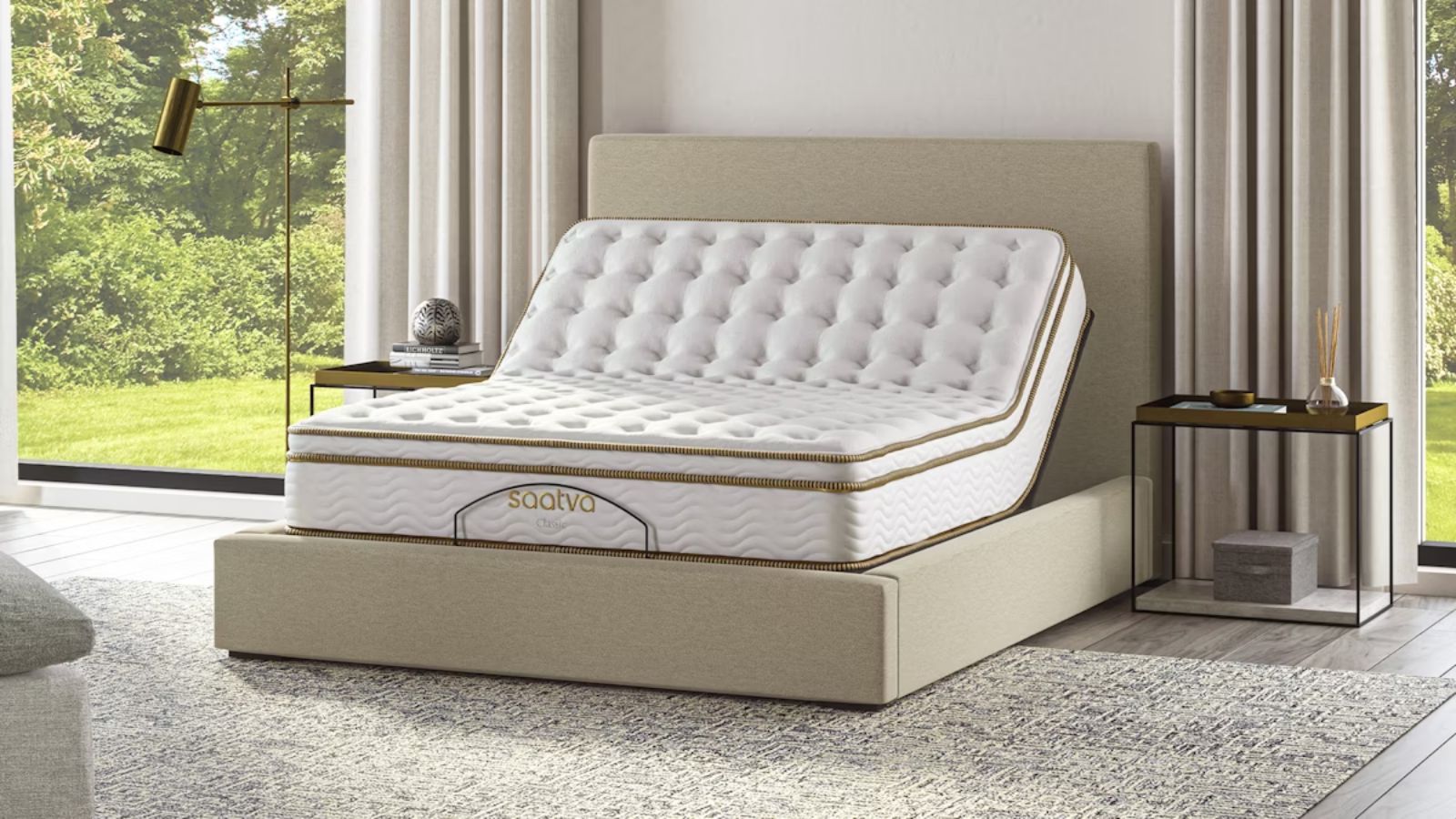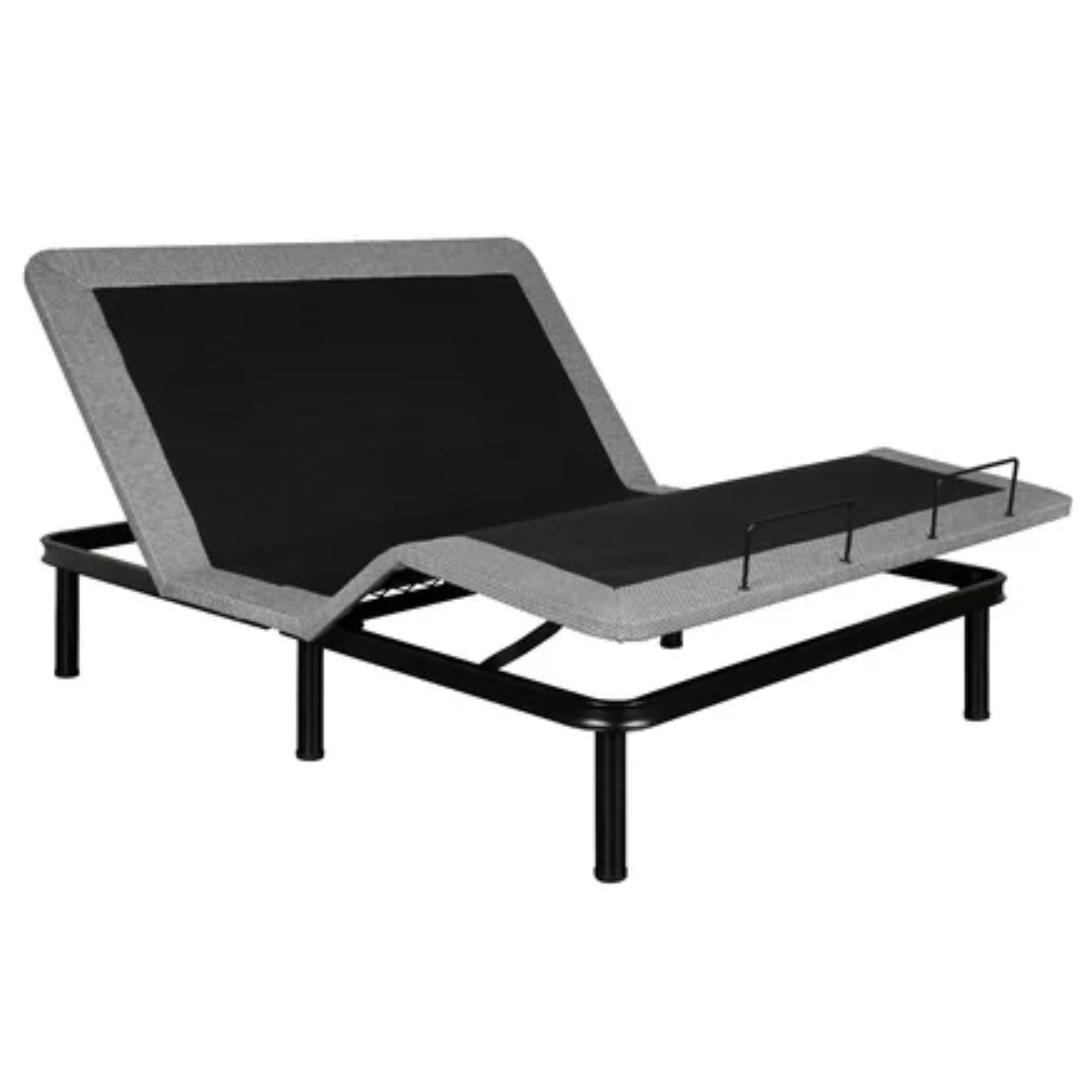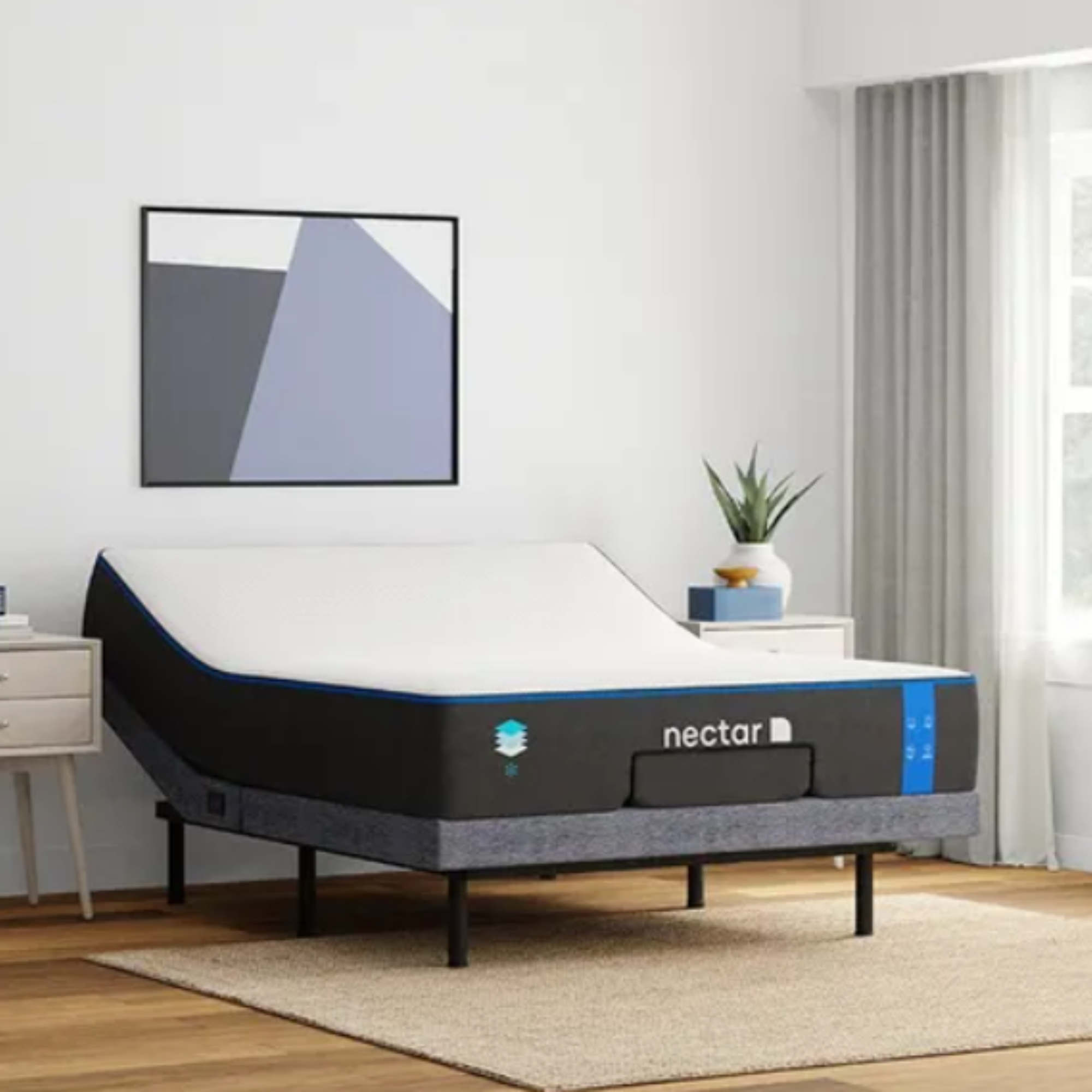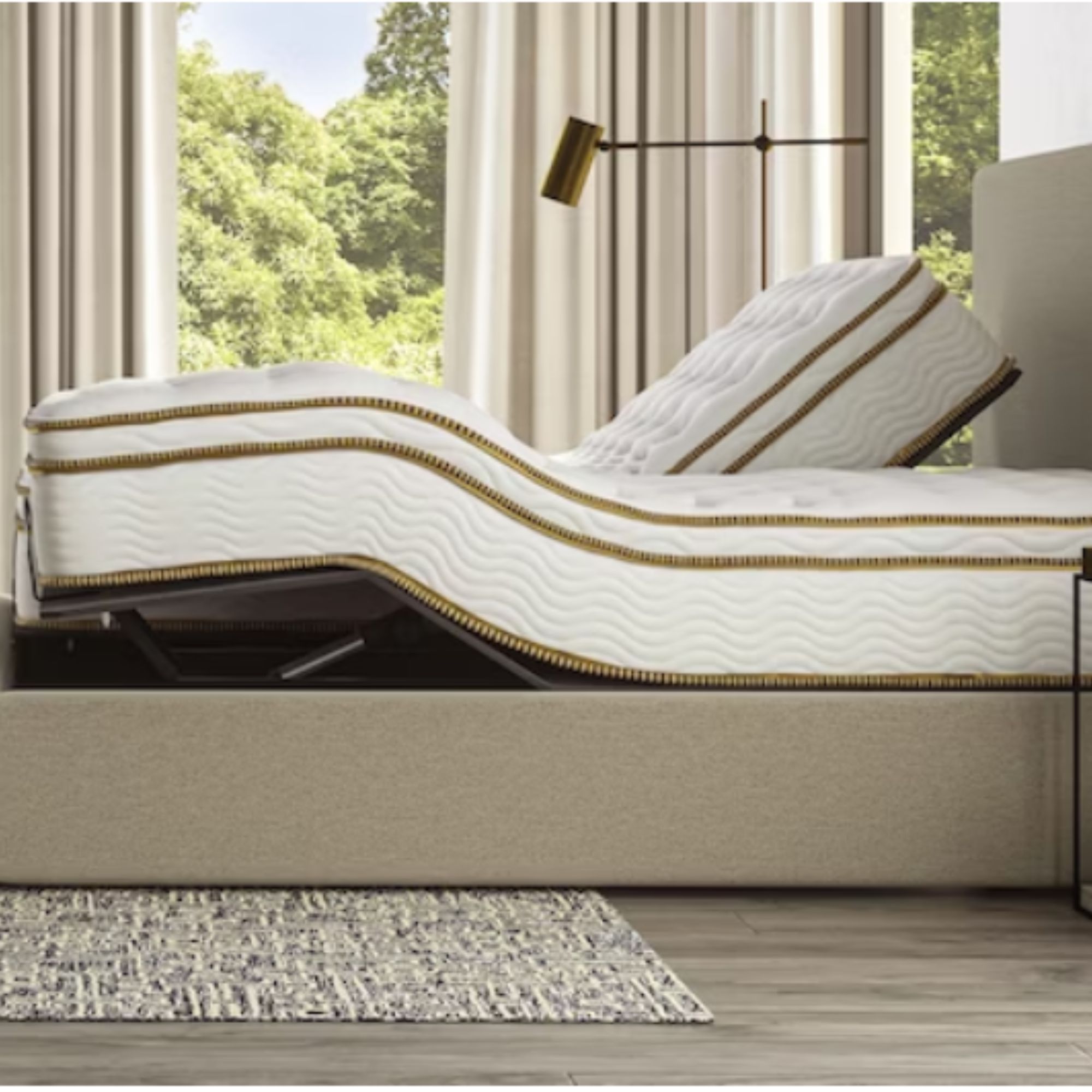Adjustable beds: what are they, how much do they cost, and how to choose the right one
Want to be able to adapt the shape of your bed to create comfort? This is what you need to know about adjustable beds


If you like the idea of maximizing you comfort, then an adjustable model is well worth your consideration. It’ll allow you to raise the head end, and typically adjust the lower section, too, while some models provide additional adjustments plus a whole heap of other clever features.
As well as making you more comfortable for activities like reading and watching TV, adjustable beds can also be a great choice for those who suffer from back pain or other medical conditions, creating the optimum profile to relieve symptoms.
What’s more, choose the right model and two sleepers can make individual adjustments on their side of the bed.
Here, we’ve put together an expert guide to explain what options adjustable beds offer so you can choose the right one for you, along with information on costs, benefits, and whether they work with the best mattresses.
What is an adjustable bed?
An adjustable bed is a type of mattress base that you team with a suitable mattress. Motors power an adjustable bed, allowing you to change its shape at the touch of a remote. The simplest model has just one joint, letting you raise your upper body. However, most permit both the upper and lower body to be elevated independently and others have additional joints that can be adjusted to create a wide range of different positions.
Size-wise, you’ll typically find twin XL, queen, king, and California king sized adjustable beds on offer. Want to be able to adapt the two sides of the bed to suit the individual preferences of bed sharers? Look for split designs which allow left and right to be moved independently to suit the needs of two individuals.
‘An important feature to consider when choosing an adjustable base is how you switch positions,’ says Stephen Light, CEO and co-owner at Nolah Technologies. ‘You’ll find options that use a remote, an app on your phone, or even voice commands.’
Adjustable bed features worth considering can include a zero gravity setting, which elevates your legs above your feet and puts the spine into a neutral position and can be helpful for those with lower back pain. An anti-snoring preset, meanwhile, elevates the head.
‘Look for a base with pre-set positions like zero gravity and the option to save your own custom positions,’ recommends Stephen Light. ‘If additional luxury features are important to you, you can also look for amenities like massage motors, under-bed lighting, timers, device charging ports, and more,’ he adds.
If you find getting into or out of bed difficult, a model with adjustable legs is useful, while wall glide or wall hugging adjusts the base slightly backwards when you incline the head of the bed to keep your nightstand within reach.

Stephen Light is the CEO and Brand Lead of Nolah. After 20 years in e-commerce and marketing, he now proudly serves as CEO of Nolah Technologies. He believes modern mattress technology must be informed by present-day sleep habits and human anatomy every step of the way.
Is an adjustable bed right for you?
Adjustable beds can be a sound choice for a whole variety of people. They're great if you have mobility problems, as they can make it easier to sit up and get out of bed. They're also a good choice if you snore, as they force you to sit up, and they can alleviate circulatory issues, too.
Bear in mind that an adjustable bed can be a more expensive sleep option, especially if you opt for one of the most sophisticated models. You should always assess which features you need and want to get the most from your budget. Factor in, too, the fact that you may need to invest in a different mattress if your current mattress isn’t compatible with an adjustable bed.
What are the benefits of an adjustable bed?
An adjustable bed offers plenty of benefits over a non-adjustable model. The first is that it makes the bed more versatile. ‘Adjustable beds are great for lounging; they make it easy to sit up comfortably so you can read or watch TV in bed,’ says Stephen Light, CEO and co-owner at Nolah Technologies.
If you don’t like to sleep flat, being able to customize your bed is a huge advantage of an adjustable model and, if you opt for a split design, it allows two people to follow their individual preferences.
Adjustable beds are also a good solution for those with a variety of medical conditions. ‘Depending on the position you choose for sleep, an adjustable base can relieve pressure on your back and joints, improve circulation, relieve snoring by elevating your head, and may even assist with digestion,’ Stephen Light explains. And adjustable height models are excellent for those who find access to a bed more difficult.
How much does an adjustable bed cost on average?
Typically, you’ll find adjustable bed prices start from a little under $1,000 while they can go up to over $5,000. Size influences cost, of course, as do the features on offer, so assessing which are essential and which are good to have but not deal breakers will help you get the most from your budget.
Other aspects you should check to spend wisely are the weight limit, which applies to both sleeper and mattress. Check, too, the warranty cover that specifically applies to motors and electronics rather than other parts which is likely to be limited in its duration. While we haven't been able to test adjustable bed bases yet, here's some examples.

For a less expensive option, this adjustable bed is under $1000. I haven't tested it, so I won't vouch for its durability, but it has nearly 400 5-star reviews on Wayfair.
However, bear in mind that these bases don't work for every type of mattress. They won't work for old-school innerspring mattresses, or firm mattresses, as they won't be able to flex. Be sure to check when you buy a mattress that the manufacturer specifies that it can be used with an adjustable bed.
Sign up to the Homes & Gardens newsletter
Design expertise in your inbox – from inspiring decorating ideas and beautiful celebrity homes to practical gardening advice and shopping round-ups.

Sarah is a freelance journalist and editor. Previously executive editor of Ideal Home, she’s specialized in interiors, property and gardens for over 20 years, and covers interior design, house design, gardens, and cleaning and organizing a home for Homes & Gardens. She’s written for websites, including Houzz, Channel 4’s flagship website, 4Homes, and Future’s T3; national newspapers, including The Guardian; and magazines including Future’s Country Homes & Interiors, Homebuilding & Renovating, Period Living, and Style at Home, as well as House Beautiful, Good Homes, Grand Designs, Homes & Antiques, LandLove and The English Home among others. It’s no big surprise that she likes to put what she writes about into practice, and is a serial house renovator.
-
 Martha Stewart's intelligent cabinets 'take every inch into consideration' – their 'visually light' style will solve your small kitchen storage problems
Martha Stewart's intelligent cabinets 'take every inch into consideration' – their 'visually light' style will solve your small kitchen storage problems'Every kitchen can be beautiful and functional, no matter what the size': 9 years since sharing her clever storage, Martha's cabinets are just as beautiful
By Megan Slack Published
-
 This once-dated kitchen is now a timeless space with the coziest details – and its the classic color palette that's made it a chic, welcoming space
This once-dated kitchen is now a timeless space with the coziest details – and its the classic color palette that's made it a chic, welcoming spaceWarming colors and natural materials combine to create this enduringly classic kitchen scheme
By Molly Malsom Published

